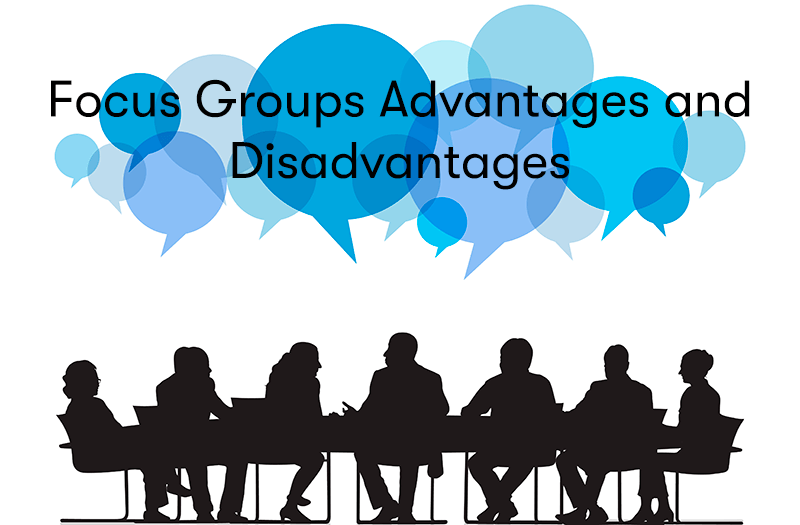Focus Groups Advantages and Disadvantages
Within the User Experience (UX) research domain, focus groups are recognised as a paramount instrument, presenting distinct advantages and inherent challenges.
In this blog, we will delve into the advantages of focus groups, uncovering their potential for rich qualitative data and diverse perspectives. But, it's equally crucial to navigate the pitfalls, as we'll also shine a light on the disadvantages that can influence the outcomes. Join us on this expedition to understand how focus groups can be a powerful asset, yet not without their intricacies.
What Are Focus Groups?
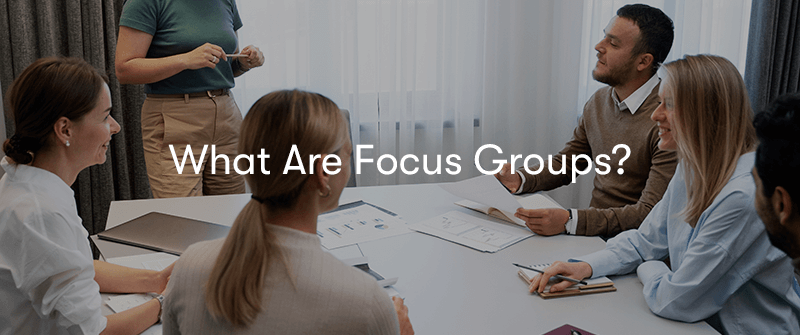
UX focus groups are a qualitative research method used in the field of user experience design to gather insights, feedback, and opinions from a group of participants about a product or service. The primary goal of a UX focus group is to understand users' perceptions, preferences, and expectations regarding the user experience. Here are some key characteristics and aspects of UX focus groups:
Participant Selection
A focus group typically consists of a small group of participants, usually between 5 to 10 individuals, representing the target audience or user demographic of the product or service being studied. Participants are carefully selected to ensure diversity and relevance.
Moderator
A skilled moderator or facilitator leads the focus group sessions. The moderator's role is to guide the discussion, ask open-ended questions, and encourage participants to share their thoughts, feelings, and experiences.
Structured Discussion
Focus group sessions follow a structured format, often starting with general questions and gradually moving towards more specific topics. The moderator may use various techniques, such as brainstorming or role-playing, to elicit responses.
Observation
UX researchers and designers often observe the focus group sessions from behind a one-way mirror or through video conferencing to gain deeper insights into participant reactions, body language, and non-verbal cues.
Duration
A single focus group session typically lasts around 1-2 hours, although this can vary depending on the complexity of the topic and the depth of discussion required.
Recording
Focus group sessions are usually recorded through audio or video to ensure no insights are missed during analysis. Asking permission to record individuals is imperative.
Analysis
After the focus group sessions are completed, researchers analyse the collected data to identify patterns, themes, and critical insights. These insights help inform the design and development process, highlighting areas needing improvement or refinement.
Iterative Process
UX focus groups are often conducted iteratively throughout a product or service's design and development lifecycle. This allows designers and developers to incorporate user feedback at various stages, ultimately leading to a more user-centred and refined end product.
Limitations
It's important to note that focus groups have limitations, including the potential for groupthink, dominant voices within the group, and the artificial setting of the discussion. Therefore, they are often used in conjunction with other research methods, such as usability testing and surveys, to obtain a more comprehensive understanding of the user experience.
In summary, UX focus groups are a valuable tool for gathering qualitative feedback and insights from users, helping designers and developers create products and services that better meet user needs and expectations. When conducted effectively, focus groups can provide valuable input for improving the user experience.
Advantages of Focus Groups
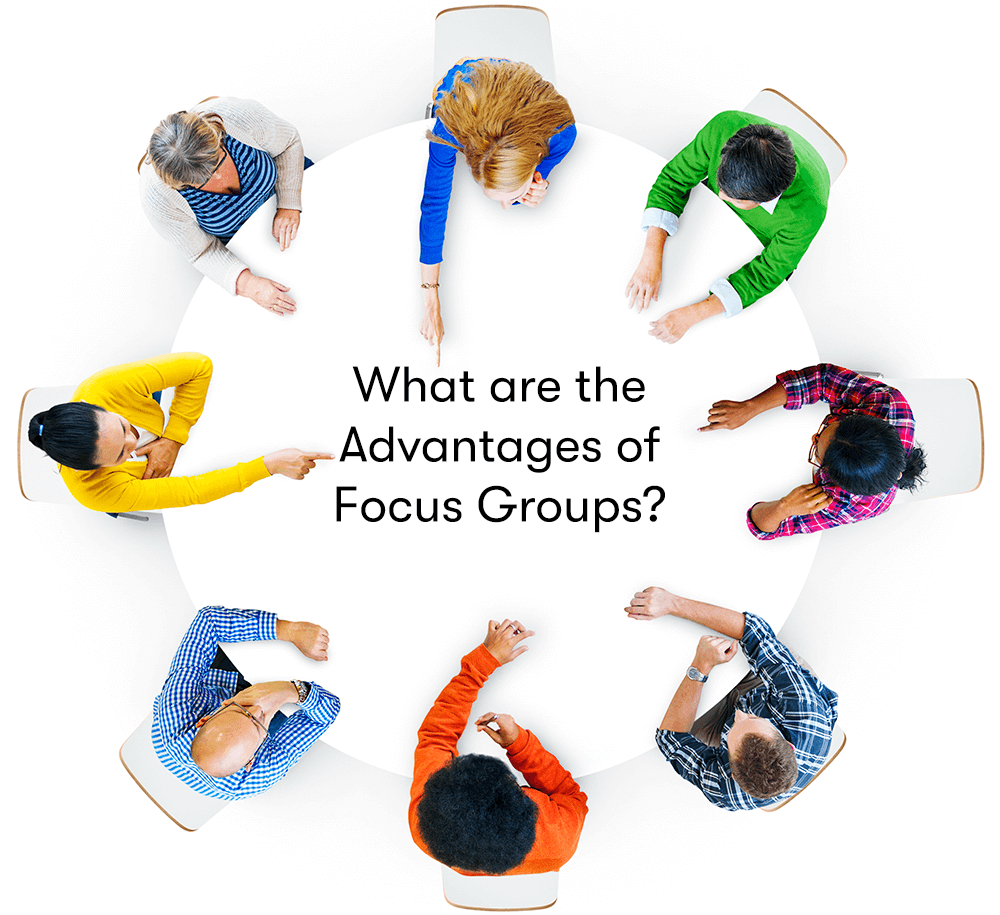
Focus groups offer several advantages as a qualitative research method, especially in gathering participant insights and feedback. Some of the key advantages include:
Diverse Perspectives
Focus groups allow you to gather input from diverse participants representing various backgrounds, experiences, and viewpoints. This diversity can uncover various perspectives and opinions that may not be apparent through other research methods.
Group Dynamics
Group discussions can stimulate creativity and idea generation. Participants often build upon each other's thoughts, leading to richer conversations and potentially uncovering novel insights.
In-Depth Understanding
Focus groups allow in-depth exploration of participants' attitudes, beliefs, and emotions. Moderators can probe further into participants' responses to better understand their experiences and motivations.
Real-Time Feedback
Researchers can observe participants in real time, allowing them to capture immediate reactions, body language, and non-verbal cues. This real-time feedback can be valuable for understanding user emotions and reactions.
Cost-Effective
Compared to one-on-one interviews, focus groups are often more cost-effective for simultaneously gathering qualitative data from multiple participants. This can be especially advantageous when working with limited resources.
Efficiency
Focus groups can provide a large amount of data relatively quickly, making them an efficient way to gather insights and feedback. This can be particularly useful when tight timelines are a concern.
Flexibility
Focus group discussions can be adapted to various research objectives and topics, making them versatile for multiple research purposes, from product development to marketing campaigns.
Iterative Design
By conducting multiple focus group sessions at different project stages, researchers can iterate on design or development based on user feedback, leading to more user-centred and effective outcomes.
Group Interaction
Focus groups allow participants to interact with one another, which can simulate social contexts and group dynamics that may be relevant to the product or service being studied. This can provide insights into how users may influence each other's opinions and decisions.
Rich Qualitative Data
Focus groups generate rich qualitative data, including narratives, stories, and anecdotes, which can provide context and depth to user experiences. This qualitative data can complement quantitative research findings.
Disadvantages of Focus Groups
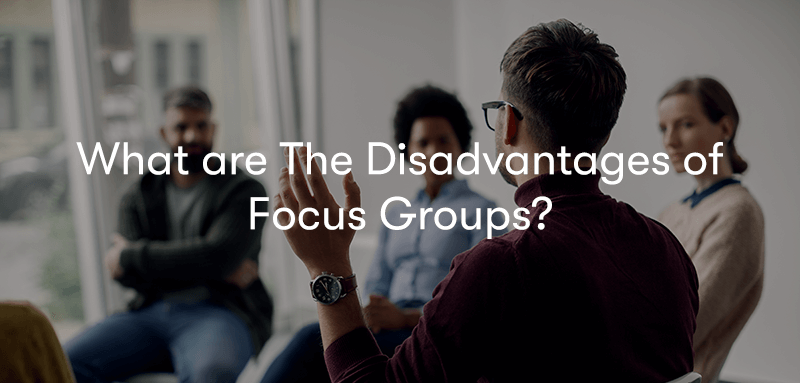
While focus groups offer several advantages, they also come with their share of disadvantages and limitations. It's essential to be aware of these drawbacks when considering the use of focus groups for research:
Limited Sample Size
Focus groups typically involve a small number of participants, usually between 5 to 10 people. This limited sample size may not be representative of the entire user population, making it challenging to generalise findings.
Potential for Groupthink
Group dynamics can sometimes lead to groupthink, where participants conform to the dominant opinions or ideas within the group. This can result in biased or less diverse feedback.
Dominant Voices
In a focus group, certain participants may dominate the conversation, drowning out quieter voices or preventing other participants from expressing their opinions fully. This can skew the results and lead to an incomplete understanding of the user experience.
Lack of Privacy
Participants may be reluctant to share sensitive or personal information in a group setting, limiting the depth of discussion on specific topics.
Moderator Bias
The moderator's behaviour, tone, and phrasing of questions can influence participants' responses. Biased moderation can lead to skewed or inaccurate data.
Artificial Setting
Focus groups occur in a controlled, artificial setting, which may not accurately replicate the user's natural environment or real-world context in which they would use the product or service.
Difficulty Handling Conflicts
Disagreements or conflicts between participants can arise during a focus group, potentially affecting the quality of the discussion and the validity of the findings.
Inability to Explore Individual Perspectives
Focus groups are unsuited for exploring individual experiences, unique needs, or personal preferences. Researchers may miss out on valuable insights that are only apparent at an individual level.
Difficulty in Recruiting Participants
Finding and recruiting participants who accurately represent the target audience can be challenging and time-consuming. Recruitment biases may also affect the results.
Analysis Complexity
Analysing focus group data can be time-consuming and complex, as it involves sifting through transcripts or recordings to identify patterns and themes. The qualitative nature of the data requires skilled researchers for meaningful analysis.
Generalisation Challenges
Since focus groups involve a small and non-random sample, it can be difficult to generalise the findings to a broader population. Results from one focus group may not apply universally.
Resource Intensive
Organising and conducting focus groups can be resource-intensive regarding time, money, and personnel. This may only be feasible for some research projects.
Given these disadvantages, researchers often use focus groups in conjunction with other research methods, such as surveys, usability testing, or individual interviews, to obtain a more comprehensive understanding of user experiences and preferences. Careful planning, moderation, and analysis are crucial to mitigate some of these limitations and maximise the benefits of focus groups.
Different Types of Focus Groups
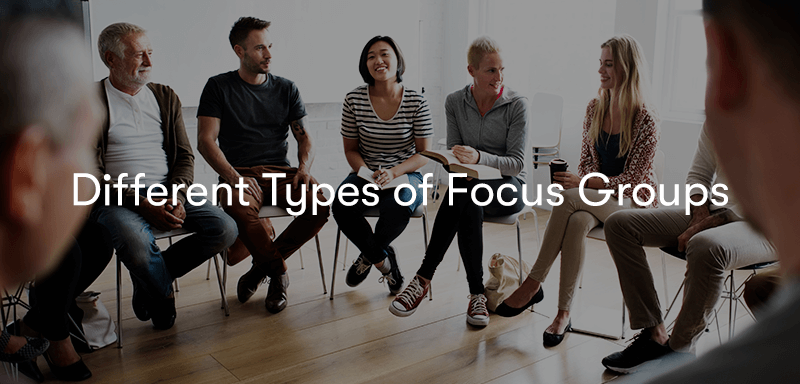
Focus groups can be categorised into various types based on their specific objectives, purposes, and the nature of the research. Here are some different types of focus groups:
Traditional Focus Groups
These are the standard focus groups where a small group discusses a particular topic, product, or service. They are often used for general exploration of user opinions, attitudes, and experiences.
Mini Focus Groups
Mini-focus groups are smaller, typically consisting of 3 to 5 participants. They are used when researchers want more in-depth discussions and a more intimate setting. Mini-focus groups can be influential for sensitive topics or when time is limited.
Dual-Moderator Focus Groups
In these groups, two moderators facilitate the discussion. One moderator leads the discussion, while the other takes notes and observes participant reactions. This approach can lead to more in-depth and comprehensive data collection.
Online/Virtual Focus Groups
Instead of in-person meetings, these focus groups are conducted online using video conferencing tools or dedicated research platforms. Online focus groups are convenient for geographically dispersed participants and can be cost-effective.
Hybrid Focus Groups
These combine in-person and online elements. Some participants meet in person, while others join virtually. Hybrid focus groups offer flexibility and accommodate participants who cannot attend in person.
Dyadic Focus Groups
Dyadic focus groups involve pairs of participants who discuss a topic together. This format encourages interaction between participants and can be useful for exploring social dynamics and interpersonal relationships.
Triadic Focus Groups
Similar to dyadic focus groups, triadic groups involve three participants discussing a topic together. Triadic groups can provide a balance between group dynamics and individual insights.
Mini-Focus Groups with Experts
These focus groups include both typical users and subject matter experts. Combining user perspectives and expert knowledge can lead to rich discussions and insights.
Client or Stakeholder Focus Groups
These groups involve representatives from the client or stakeholder side, allowing them to directly engage with end users to gather feedback and insights. This can promote collaboration and alignment between stakeholders and researchers.
Nominal Group Technique (NGT)
NGT is a structured variation of a focus group where participants individually generate ideas or preferences, which are then shared and discussed within the group. This method can help prioritise ideas or concepts effectively.
Reconvened Focus Groups
Researchers conduct multiple focus group sessions with the same participants to track changes in perceptions, attitudes, or experiences resulting from interventions or product iterations.
Satellite Focus Groups
These are additional focus groups conducted after the main sessions to explore specific topics or questions that arise during the primary discussions.
Advisory Panels
Focus groups can be formed into ongoing advisory panels, where participants meet regularly to provide continuous feedback on a product or service throughout its development lifecycle.
Each focus group type has its advantages and is suited for specific research objectives. The choice of focus group type should align with the goals of the research project, the nature of the topic, and the available resources. Researchers should carefully plan and design focus group sessions to ensure they meet their intended objectives effectively.
Focus Groups and UX Research
Focus groups and UX research can work synergistically to provide valuable insights into user behaviours, preferences, and experiences. Here's how they complement each other:
User Feedback Collection
Focus groups can be used as a qualitative research method to gather initial user feedback about a product or service concept. This feedback can help identify potential usability issues, user preferences, and pain points.
Early Stage Concept Testing
In the early stages of product development, focus groups can help validate and refine concepts and ideas. Researchers can present wireframes, prototypes, or mock-ups to participants to gauge their initial reactions and gather suggestions for improvement.
Idea Generation
Focus group discussions can stimulate idea generation and creativity. Participants may suggest innovative features, improvements, or new use cases that designers and developers may have yet to consider.
Exploring User Needs and Goals
Focus groups provide a platform to delve into users' needs, goals, and motivations. Understanding these aspects is crucial for designing a product or service that aligns with user expectations.
Identifying Pain Points
Focus groups can uncover pain points and frustrations that users experience with existing products or services. This information helps designers prioritise areas for improvement.
User Persona Validation
Focus groups can be used to validate or refine user personas. By interacting with real users, researchers can confirm whether their assumptions about user demographics, behaviours, and preferences are accurate.
Iterative Design
Conducting focus groups at different stages of the design and development process allows for iterative improvements based on user feedback. This iterative approach helps create a more user-centred and effective product.
Usability Testing Preparation
Insights from focus groups can inform the design of usability testing scenarios and tasks. Researchers can tailor usability tests to address specific user concerns and goals identified in the focus groups.
Content and Messaging Evaluation
Focus groups can be used to test and refine content, messaging, and communication strategies. This is particularly valuable for marketing, branding, and user communication efforts.
Gathering Qualitative Data
Focus groups generate rich qualitative data, including narratives, anecdotes, and detailed user experiences. This data can complement quantitative UX research methods such as surveys and analytics.
Understanding Social and Group Dynamics
In some cases, products or services are used in a social context or group setting. Focus groups can help explore how users influence each other's perceptions and behaviours in these contexts.
Validation of Findings
Findings from focus groups can be compared and validated against data from other UX research methods, providing a more holistic and robust understanding of the user experience.
To maximise the effectiveness of integrating focus groups into UX research, planning and conducting focus group sessions is essential. This includes selecting the right participants, developing clear discussion guides, using skilled moderators, and analysing the data rigorously. Combining focus group findings with quantitative UX research methods can provide a comprehensive view of user experiences and inform data-driven design decisions.
Where Can You Learn More About UX?
Our BCS Foundation Certificate in User Experience training course is perfect for anyone who wants to increase their knowledge of User Experience. The BCS User Experience course will teach you the UX methodology, best practices, techniques, and a strategy for creating a successful user experience. The course will cover the following topics:
- Guiding Principles
- User Research
- Illustrating The Context of Use
- Measuring Usability
- Information Architecture
- Interaction Design
- Visual Design
- User Interface Prototyping
- Usability Evaluation
Click the button below to find out more.

Final Notes On The Advantages And Disadvantages Of Focus Groups
These focus group discussions allow researchers to explore user attitudes, preferences, and pain points, facilitating early concept testing, idea generation, and iterative design. Focus groups complement other UX research methods, such as usability testing and surveys, offering a holistic view of the user experience.
When executed thoughtfully, focus groups bring the user's voice to the forefront, helping designers and developers create products and services that align closely with user needs and expectations. This synergy between focus groups and UX research enhances the quality and relevance of user-centred design.


